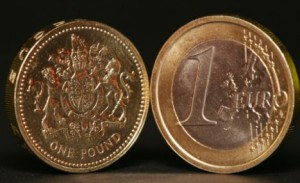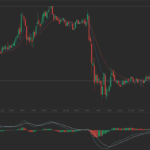 The euro rose against the British pound following a report that showed an unexpected decline in UK manufacturing last month, while growth in the euro zone manufacturing sector remained in a reasonable range to the strongest level in almost three years, and unemployment in Germany declined to a two-year low in March, adding to signs the recovery is gaining traction.
The euro rose against the British pound following a report that showed an unexpected decline in UK manufacturing last month, while growth in the euro zone manufacturing sector remained in a reasonable range to the strongest level in almost three years, and unemployment in Germany declined to a two-year low in March, adding to signs the recovery is gaining traction.
EUR/GBP hit a session high at 0.8291 at 08:45 GMT, after which consolidation followed at 0.8282, adding 0.22% for the day. Support was likely to be received at March 31st low, 0.8252, while resistance was to be met at March 31st high, 0.8298.
Manufacturing activity in the United Kingdom slowed down in March, with the corresponding PMI falling to 55.3, the weakest since July, from a revised down reading of 56.2 in February, a report by the Chartered Institute of Purchasing and Supply (CIPS) showed today. Analysts predicted the index will come in at 56.7 last month. A reading above the key level of 50.0 is indicative of expansion in the sector.
While the recovery seems to be gaining momentum, BoE Governor Mark Carney said that investments and exports need to accelerate in order to generate sustainable growth. Last year, the UK economy expanded at a 1.7% annualized rate, the strongest pace since 2010, but growth was mainly led by consumer spending.
“The old criticisms still apply, with the survey signalling a downturn in export growth and an expansion that is all-too reliant on domestic consumers,” said Rob Dobson, senior economist at Markit in London, cited by Bloomberg. BoE officials will “read this combination of slower but sustained output growth and muted price trends at manufacturers as in line with maintaining their current monetary-policy stance,” he added.
Export orders declined sharply to 52.8 last month from 54.6 in February, the weakest since May, mainly due to decreasing demand in the Asia-Pacific region, data from the report showed today.
Meanwhile, euro zone’s final manufacturing PMI for March met the preliminary reading at 53.0, which was announced on March 24th, data by Markit Economics showed today. However, the index eased from February’s reading of 53.2, but remained within close range to the strongest level in almost three years. Euro area’s PMI has been above the key levl of 50.0, which indicates expansion in the sector, since July last year. Gauges for the four largest economies in the 18-nation common currency bloc all indicated growth last month.
“The goods-producing sector is on course to provide a meaningful boost to the overall economy in the first three months of the year,” said Chris Williamson, chief economist at Markit in London, cited by Bloomberg. Still, “a self-sustaining recovery is not yet in place and reliant at least in part on price discounting to win sales. Such deflationary signals will continue to spook policy makers.”
Manufacturing output in Germany, the largest euro zone economy, slowed down to 53.7 last month from an initial estimate of 53.8. French manufacturing switched from contraction to expansion for the first time in two years, with the corresponding PMI, coming in at 52.1 in March, from 49.7 in the previous month.
Also fanning positive sentiment, the final manufacturing PMI for Italy advanced to a reading of 52.4 last month from 52.3 in February, while in Spain the PMI rose to 52.8 in March from 52.5 in the prior month.
In addition, the German unemployment rate came in at 6.7% last month, the lowest since March 2012 and matching the downward revised February’s jobless rate.





